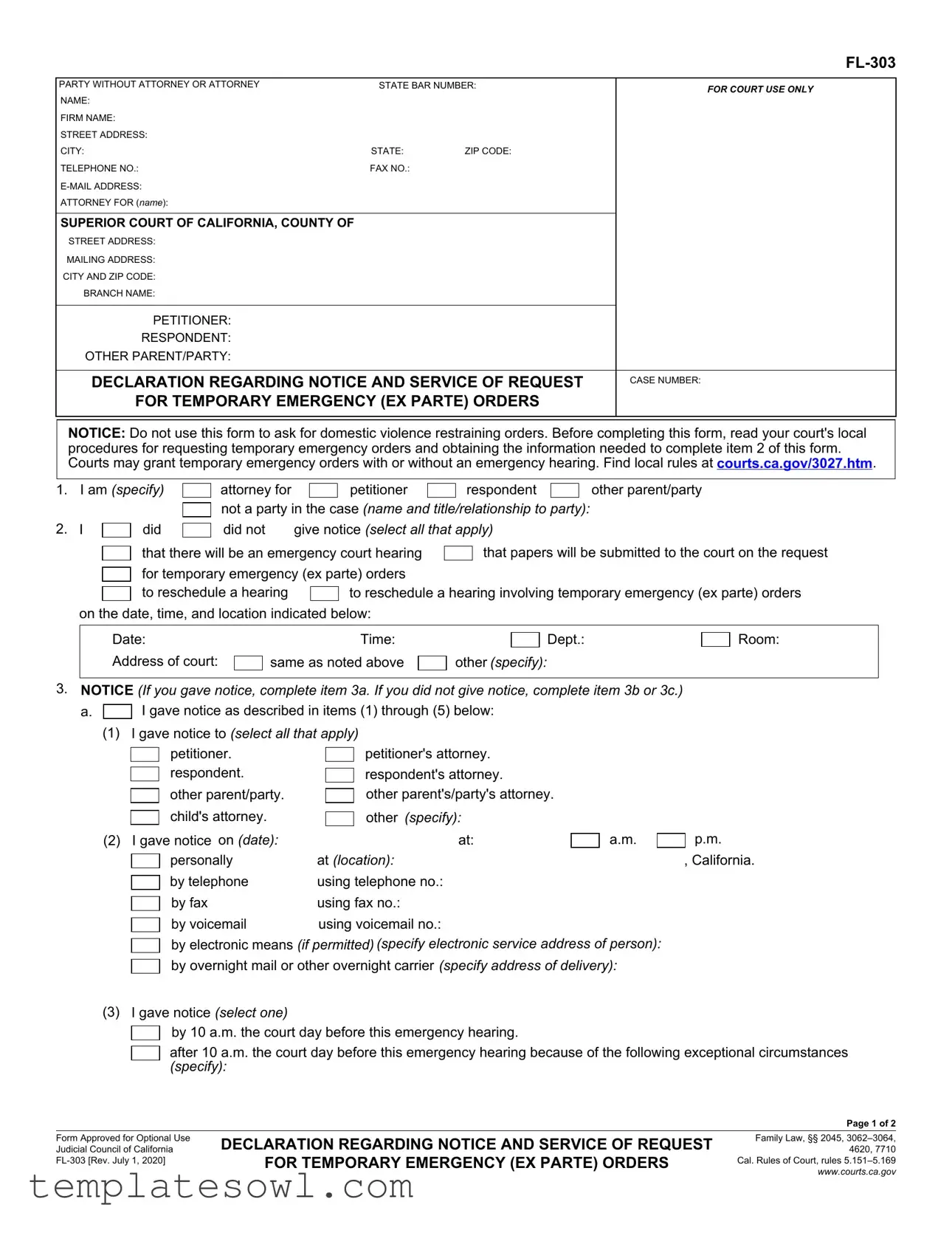What is the FL-303 form used for?
The FL-303 form, titled "Declaration Regarding Notice and Service of Request for Temporary Emergency (Ex Parte) Orders," is utilized in family law cases within California. It serves the purpose of informing the court about the notice given to the opposing party regarding a request for temporary emergency orders. This can be crucial in matters involving immediate needs such as child custody or support issues that require urgent attention.
Who is required to fill out the FL-303 form?
The form must be completed by any party involved in a family law case who is seeking temporary emergency orders. This can be either a party with legal representation or someone without an attorney. It is important to accurately detail what notice, if any, was provided to the other party or parties involved in the case.
What information is needed to complete the FL-303 form?
To fill out the FL-303 form, you will need to provide your name, contact information, and your relationship to the case (petitioner, respondent, or other). Additionally, specific details regarding the notice given, including how and when it was delivered, must be included. You should also state whether you believe the opposing party will oppose the request for the emergency orders.
Can I request to waive notice on the FL-303 form?
Yes, the FL-303 form includes a section that allows you to request a waiver of notice under exceptional circumstances. If you believe that notifying the other party could lead to immediate danger or irreparable harm, you may provide facts supporting your request. The court will consider these facts closely when making its determination.
Is it necessary to serve documents along with the FL-303 form?
Yes, when submitting the FL-303 form, you must indicate whether you have served certain documents on the other party or parties involved in the case. These documents commonly include the Request for Order (FL-300) for temporary orders and any related documentation. Documentation must typically be served before the request is filed with the court.
How does the court interpret a lack of notice on the FL-303 form?
If you did not provide notice, it’s crucial that you specify your reasons in the appropriate section of the FL-303 form. The court will assess your efforts to notify the other party and the reasons for not doing so. This is important because the court is concerned with ensuring fair proceedings and protecting all parties' rights.
What happens after I submit the FL-303 form?
Once the FL-303 form is submitted, the court will review the information provided. Depending on the details of the notice given and the circumstances, the court may grant the temporary emergency orders requested. If you have waived notice, the court will evaluate the justification for that request before making its decision.
Where can I find additional guidance on filling out the FL-303 form?
For more detailed instructions related to your local court procedures, it is advisable to consult the court’s local rules and guidelines. You can find additional resources and information at the California Courts website, specifically at courts.ca.gov/3027.htm, which provides helpful insights into filing for temporary emergency orders and completing necessary legal forms.


